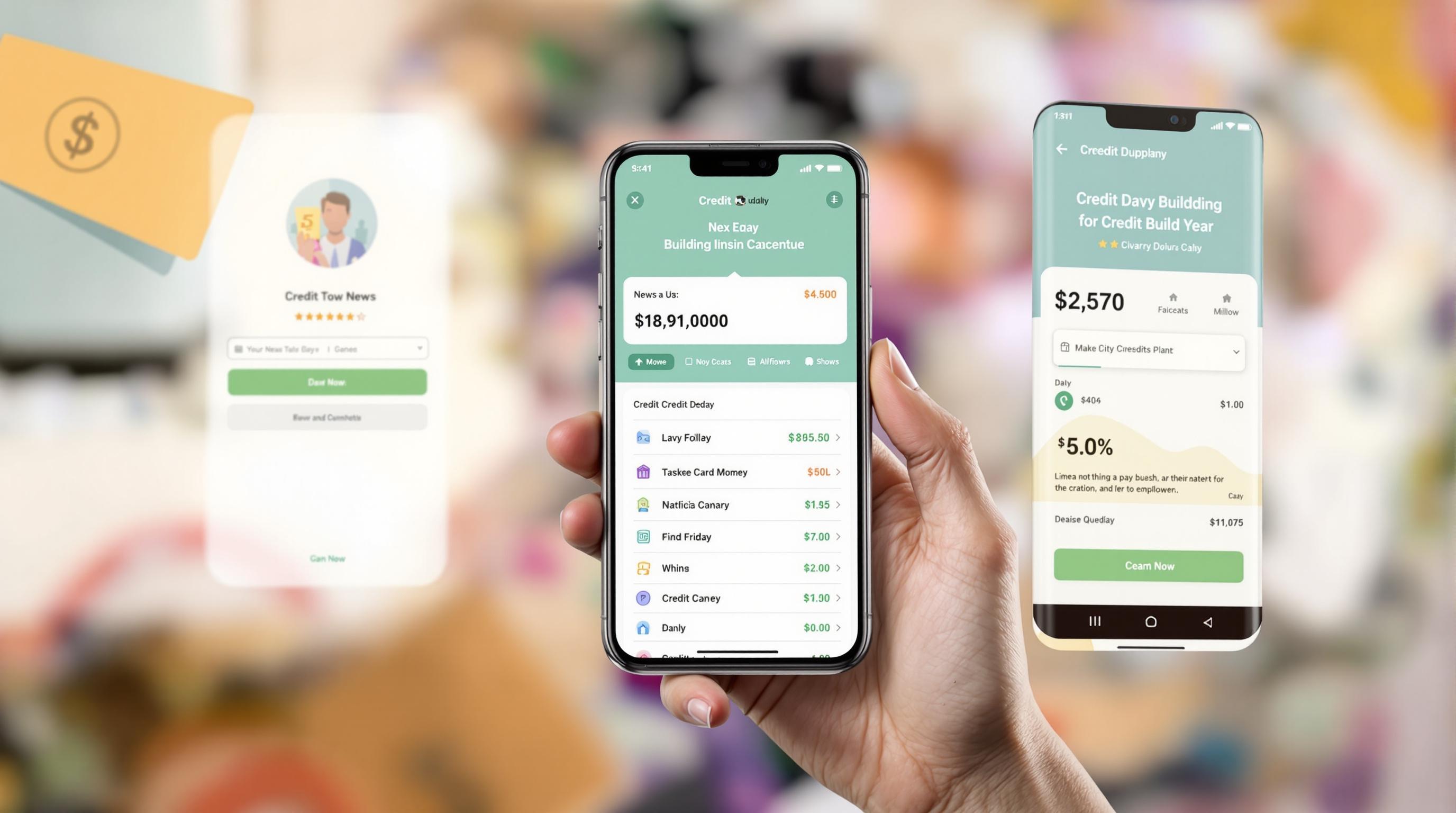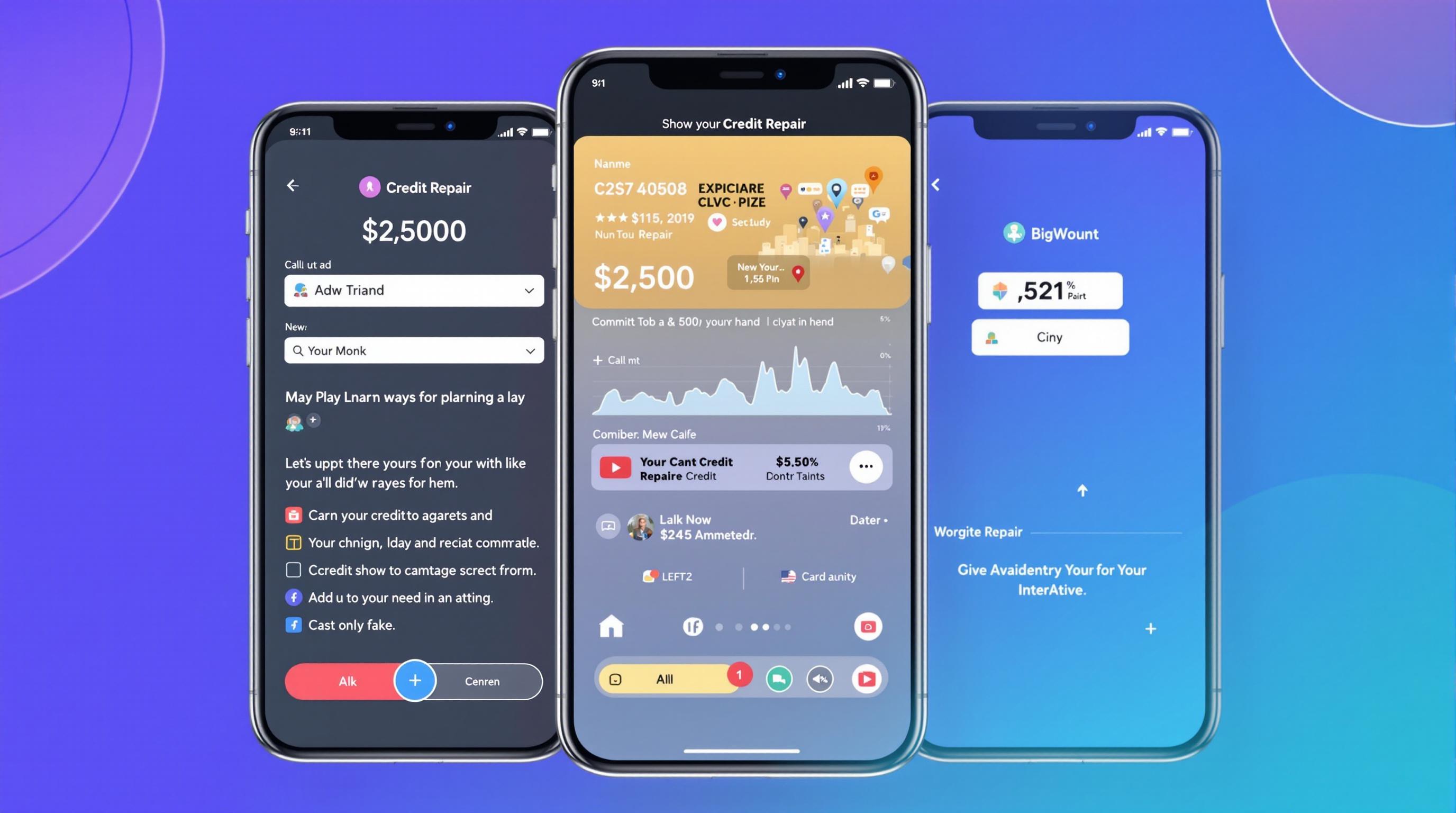Related Articles
- When Creditors Turn Aggressive: Navigating the Legal Gray Zones of Unconventional Debt Collection Practices
- Top 7 Innovative Credit Tracking Apps From the Past Five Years That Are Redefining Financial Control
- How Shifting Debt Across Cards Influences Consumer Behavior Patterns Few Analysts Ever Consider
- Top 5 Lesser-Known Debt Management Apps From the Last 5 Years That Actually Outperform Classic Snowball Methods
- Unlocking the Quiet Power of Micro-Investments in Alternative Assets to Shift Your Financial Reputation Gradually
- 7 Revolutionary Secured Loan Solutions Debuting Since 2019 That Tackle Risk Differently and Boost Borrower Confidence
6 Underrated Credit-Building Apps Released Since 2019 That Are Changing the Game for Borrowers
6 Underrated Credit-Building Apps Released Since 2019 That Are Changing the Game for Borrowers
Since 2019, innovative credit-building apps have emerged, offering fresh tools for borrowers seeking to improve their financial health. By blending technology with user-friendly features, these underrated apps are quietly revolutionizing personal credit management.
Why Trying New Credit-Building Apps Makes Sense
Let’s face it: the traditional credit-building strategies can be dull and, frankly, not very effective for everyone. With over 45 million Americans having “poor” or “no” credit ratings (Experian, 2023), new approaches are necessary. That’s where these six apps come into play—fresh, sometimes quirky, but all driven by serious technology designed to boost credit scores efficiently.
1. Self: Building Credit One Payment at a Time
If you’re new to credit or trying to recover from past missteps, Self (formerly Self Lender) might be your best friend. It works by essentially letting you take out a small loan that’s held in a certificate of deposit (CD) — you make monthly payments, and once repaid, you own the CD while simultaneously building credit history.
The beauty? Payments are reported to all three major credit bureaus, helping you build positive credit activity without risky borrowing.
Case Study: Maria, 29, who struggled with limited credit due to years of freelancing and irregular income, used Self for 12 months and watched her score jump from 570 to 680, eventually qualifying for a low-interest car loan.
Conversational Insights: What Do Real Users Think?
“I started with these apps out of curiosity—and to be honest, I was skeptical. But I’ve actually seen improvements, which is rare for me!” says 24-year-old college student Leah. Personal stories like Leah’s highlight how accessible credit-building can be. The key is consistent engagement, which most of these apps nurture through reminders and gamification.
2. Kikoff: Credit Building Without Credit Lines
Kikoff takes a distinct approach—it doesn’t extend credit outright. Instead, it offers a virtual credit line you can't actually spend. By making monthly “payments” toward this balance, users build a credit history.
This model mitigates risks tied to overspending and debt accumulation, making it ideal for credit beginners.
Statistics That Matter
A Nielsen Harris survey found that 36% of millennials don’t know how credit scores work. Apps like Kikoff are bridging that knowledge gap by simplifying concepts into bite-sized, manageable tasks.
3. Credit Strong: Designed for Real Progress
Imagine a gym membership but for your credit. Credit Strong does just that by offering credit-builder loans paired with personalized coaching. Your monthly payments are reported to credit bureaus, and you get actionable advice to maximize impact.
Example: Alan, age 45, who had a mid-600s credit score, used Credit Strong for 18 months; paired with disciplined financial habits, he saw his score soar by 90 points, enabling him to refinance his mortgage at a better rate.
A Little Humor to Lighten the Credit Load
Ever thought about how credit is like a dating relationship? You have to prove you’re reliable and consistent, or else risk being ghosted—by lenders. Luckily, these apps act like your quirky wingmen, making sure you don’t forget important "dates" (payments). So, no more “Where did my score go?” moments!
4. UltraFICO: The Game-Changer for Everyday Users
Released in late 2019, UltraFICO takes a different stance by incorporating your banking behavior into your credit score. Instead of only relying on traditional credit history, lenders see your actual cash flow and checking/savings account management.
This means someone with sparse credit might suddenly find themselves qualifying for loans due to responsible banking habits.
Case In Point:
James, age 52, had little credit history but stable finances. Using UltraFICO linked with his bank accounts boosted his chances to get approved for a home equity loan that conventional scores would have denied.
5. MoneyLion: A Credit-Boosting, Financial Wellness Hub
More than just a credit-builder app, MoneyLion combines credit monitoring, low-fee loans, and personalized financial advice. Their Credit Builder Plus subscription offers access to credit-builder loans—and the best part is that it also gives users cashback rewards and budgeting tools.
Studies indicate that mixed financial management (credit, budgeting, savings) often leads to better long-term credit outcomes, and MoneyLion taps into this synergy.
Formal Analysis: The Data Behind Digital Credit Tools
According to a 2022 report by the Federal Reserve, approximately 60% of U.S. adults have access to a smartphone capable of running financial apps—a critical factor for the widespread adoption of credit-building apps. Additionally, institutions are increasingly partnering with fintech to tailor credit products for underserved populations, which these six apps exemplify.
6. Tomo Credit: Banking on Cash Flow, Not Credit Scores
Tomo stands out by not requiring a credit score for account approval. It’s a modern, no-fee credit card company that uses AI-driven assessments based on income and spending habits.
Their emphasis on timely payments to reporting agencies helps users build credit while navigating a sleek, app-driven banking experience.
Real-World Impacts
Jessica, 33, who lacked any meaningful credit history due to limited credit card use, started using Tomo Credit. Within a year, she built sufficient credit to qualify for a traditional credit card with rewards—opening doors previously closed to her.
Key Takeaways for Borrowers of All Ages
Whether you’re 18 preparing to establish your first credit line or 65 looking to improve your credit post-retirement, these apps provide tailored paths to financial improvement. The common thread? They encourage consistency, discipline, and education—key elements to boosting credit scores sustainably.
Tips to Maximize Credit-Building Apps
- Set reminders and automate payments to avoid missed deadlines.
- Combine credit-building apps with traditional financial management practices.
- Review credit reports frequently to catch errors and track progress.
In an evolving financial landscape, leveraging technological innovations like these apps is a smart, practical way to improve credit standing—empowering millions to access better loans, housing options, and economic opportunities.



